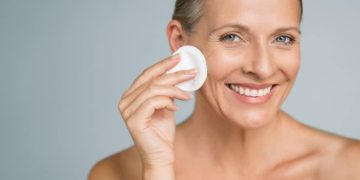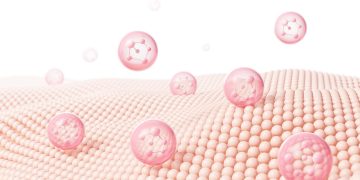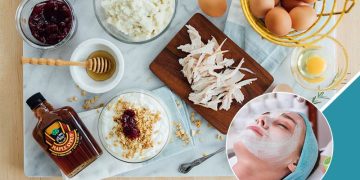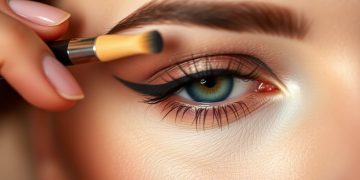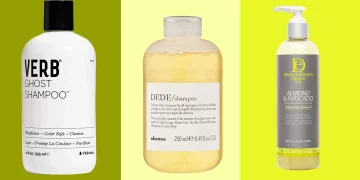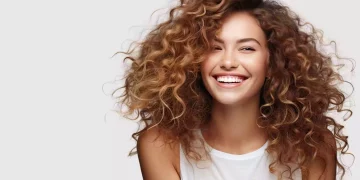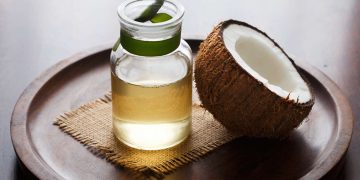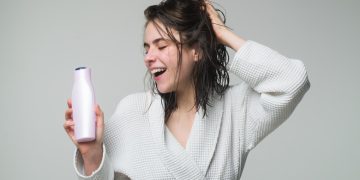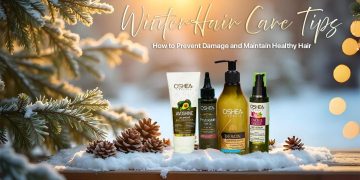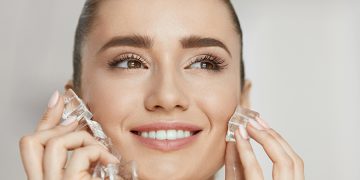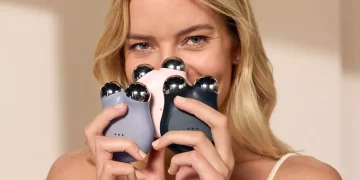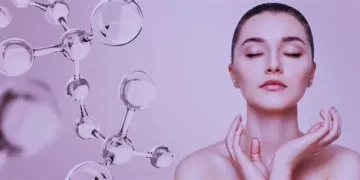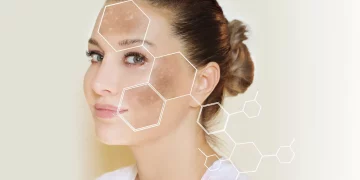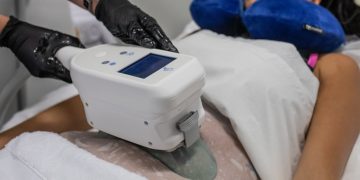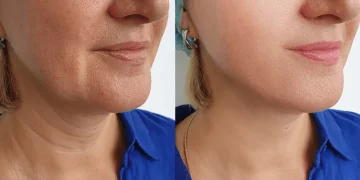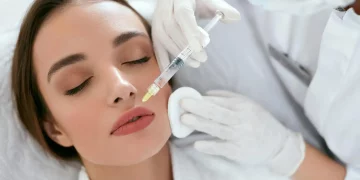Perming can create beautiful, voluminous curls or waves, but it also involves the use of chemicals that can weaken the hair structure and cause damage. If you’ve recently had a perm and are noticing dryness, frizz, or breakage, don’t worry — there are ways to repair and restore the health of your hair. With the right post-perm care routine, you can revive your locks and keep them looking soft, bouncy, and shiny.
In this guide, we’ll explore the best practices and treatments to help repair and nourish your hair after a perm, ensuring that your curls remain vibrant and your hair stays healthy.
1. Understand the Damage from Perming
Before diving into repair methods, it’s important to understand how perming can damage your hair. The perming process involves chemically breaking and reshaping the protein bonds in your hair to create curls. While the results are stunning, the process can also make your hair more porous and prone to damage, including:
- Dryness: Perming can strip hair of its natural oils, leaving it feeling dry and brittle.
- Breakage: The chemicals used during the perm process can weaken the hair shaft, making it more susceptible to breakage.
- Frizz: As hair becomes drier, it can start to frizz and lose its smooth texture.
- Loss of Elasticity: Over-processed hair may lose its natural stretch and bounce, leading to limp or unruly curls.
By understanding the potential damage, you can tailor your hair care routine to help repair the hair structure and restore softness, moisture, and elasticity.
2. Wait Before Shampooing
After perming, it’s important to avoid shampooing your hair for at least 48 hours. This gives the hair time to fully set and allows the perming solution to lock in the curls. Shampooing too soon may disrupt the curl pattern and lead to frizz or uneven curls.
Why Wait?
- Perm Solution Bonding: Perm solutions work by breaking down the natural structure of the hair, and it takes time for the hair to return to its new shape. Washing too early can cause the curls to relax and lose their definition.
- Scalp Sensitivity: Immediately after a perm, your scalp and hair may be sensitive. Shampooing right away could irritate your skin or exacerbate dryness.
3. Deep Condition Regularly
Deep conditioning is one of the most effective ways to repair hair after a perm. Permed hair tends to be more porous, meaning it loses moisture quickly. Deep conditioning treatments can restore the moisture balance, improve elasticity, and provide essential nutrients to the hair shaft.
How to Deep Condition After a Perm:
- Use a moisturizing hair mask once or twice a week. Look for formulas specifically designed for chemically treated hair, as these are typically richer in nourishing ingredients.
- If your hair is extremely damaged, consider using a protein-based treatment to help strengthen the hair and restore its structure. Just be careful not to overuse protein treatments, as they can make the hair stiff if used too often.
Best Ingredients for Deep Conditioning:
- Shea Butter: Rich in vitamins and fatty acids, shea butter deeply moisturizes and nourishes hair.
- Keratin: Helps to restore the protein structure of your hair and strengthen it from within.
- Argan Oil: Known for its ability to hydrate and add shine, argan oil can also help tame frizz.
- Coconut Oil: Provides intense hydration and can help repair damaged hair fibers.
Recommended Products:
- Olaplex No. 3 Hair Perfector: A popular treatment for restoring damaged hair and strengthening the strands.
- L’Oréal Paris Elvive Total Repair 5 Damage-Erasing Balm: A rich, nourishing mask that helps repair damaged hair and bring back softness and shine.
4. Use Sulfate-Free Shampoos
Sulfates, commonly found in shampoos, are cleansing agents that can strip natural oils from your hair. After perming, your hair is already more porous and prone to dryness, so using a sulfate-free shampoo will help to preserve the moisture balance and prevent further damage.
Why Sulfate-Free?
- Gentler on Hair: Sulfate-free shampoos are less likely to strip your hair of essential oils, which are especially important for color-treated or chemically processed hair.
- Preserves Curls: Harsh chemicals can cause curls to become loose and frizzy. Sulfate-free formulas are gentle and help maintain the integrity of the curls.
Recommended Sulfate-Free Shampoos:
- Pureology Hydrate Shampoo: A moisturizing shampoo designed for dry and chemically treated hair.
- SheaMoisture Raw Shea Butter Moisture Retention Shampoo: Ideal for moisturizing and nourishing chemically treated hair.
5. Moisturize with Leave-In Conditioners and Oils
Leave-in conditioners and oils are essential for maintaining hydration and smoothing the hair after a perm. These products can help control frizz, define curls, and protect the hair from further damage caused by environmental factors like heat and pollution.
Why Leave-In Products?
- Long-Lasting Hydration: Leave-in products provide continuous moisture throughout the day, ensuring your hair remains soft and manageable.
- Heat Protection: Many leave-in conditioners contain heat protectants that prevent further damage when styling with hot tools.
- Curl Definition: Leave-in conditioners and oils can enhance the curl pattern and make your curls more defined and bouncy.
Recommended Leave-In Products:
- Ouidad Moisture Lock Leave-In Conditioner: A lightweight leave-in conditioner that hydrates and defines curls.
- Moroccanoil Treatment: A versatile oil that can be used on damp hair to lock in moisture and restore shine.

6. Avoid Heat Styling
After perming, your hair is already chemically processed, so it’s best to avoid using heat styling tools like flat irons, curling irons, or blow dryers whenever possible. Heat can further damage your hair, causing dryness, frizz, and loss of elasticity.
Tips for Minimizing Heat Damage:
- Air-Dry: Allow your hair to air-dry whenever possible. Use a microfiber towel to gently blot your hair after washing, which helps to reduce frizz and prevent breakage.
- Use Heat Sparingly: If you must use heat styling tools, always apply a heat protectant spray beforehand to minimize damage.
Recommended Heat Protectants:
- TRESemmé Thermal Creations Heat Tamer Spray: Protects hair from heat damage while styling.
- CHI 44 Iron Guard Thermal Protection Spray: A protective spray that shields hair from high heat.
7. Trim Your Hair Regularly
Permed hair tends to have more split ends and breakage, so regular trims are essential for keeping your hair looking healthy. Trimming the ends will prevent splits from traveling up the hair shaft and maintain the shape of your curls.
How Often to Trim:
- If you’re aiming to repair damaged hair, a trim every 6-8 weeks is ideal. Regular trims will keep your hair looking neat and prevent further damage from affecting the overall appearance of your curls.
8. Protect Your Hair While Sleeping
While you sleep, your hair can rub against pillows, causing friction and leading to tangling or frizz. To minimize this, you can protect your perm by using special accessories that help preserve your curls and prevent damage.
How to Protect Curls at Night:
- Silk or Satin Pillowcases: These materials cause less friction compared to cotton, preventing frizz and breakage while you sleep.
- Loose Bun or Braids: Tie your hair in a loose bun or braids to prevent tangling and protect the curl pattern.
9. Maintain a Healthy Diet
A balanced diet can help improve the overall health of your hair, which in turn can promote faster recovery from perming damage. Hair is made up of protein (keratin), so incorporating protein-rich foods into your diet will support healthy hair growth and repair.
Key Nutrients for Hair Health:
- Biotin: Found in eggs, nuts, and seeds, biotin is essential for strong, healthy hair.
- Omega-3 Fatty Acids: Found in fatty fish like salmon, omega-3s help nourish the scalp and promote hair health.
- Vitamin C: Found in citrus fruits and leafy greens, vitamin C aids in collagen production and supports hair strength.
Conclusion
While perming can cause damage to your hair, with the right care, you can restore its health and keep your curls looking beautiful and vibrant. Focus on deep conditioning, moisturizing, and protecting your hair from further damage by using the right products and minimizing heat styling. Regular trims, a healthy diet, and protecting your hair while sleeping will also contribute to the overall health and appearance of your hair.
By following these steps and being patient with your hair’s recovery process, you can enjoy soft, bouncy curls that are full of life and vitality long after the perming process is complete.



